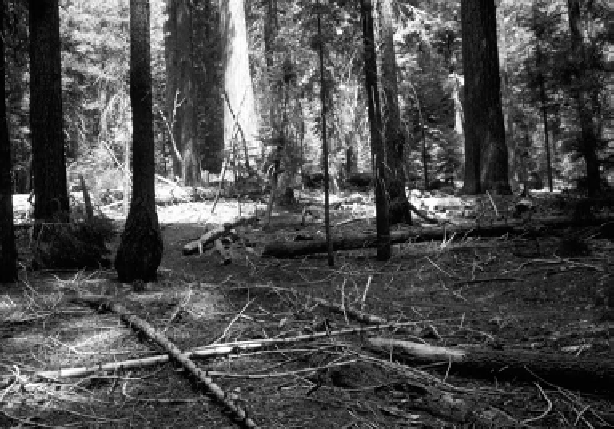Agriculture Reference
In-Depth Information
Fig. 5.7
Surface fuels of dead branches and other litter in the understory of a mixed conifer forest.
(Photo by Jon Keeley.)
the closed canopy may limit the length of the season of drying that converts litter
to available fuels, and fuel distribution is often more heterogeneous, which may
inhibit fire spread, all of which contribute to longer intervals between fires. This
longer fire interval is a factor in greater fuel accumulation and this, coupled with
the uneven distribution of fuels, leads to mixed fire behavior of low-severity
surface spread punctuated in spots with higher-intensity passive crown fire. In
mixed conifer and broadleaf forests pine generally have a selective advantage over
oaks (
Quercus
spp.) in that conifer fuels promote higher temperatures that inhibit
oak regeneration (Williamson & Black
1981
; Knapp & Keeley
2006
).
Fuel type also affects fire season. On drier open sites herbaceous fuels dry
sufficiently to carry fire from late spring to autumn. On more mesic closed-canopy
sites, dead surface fuels dry later in the year, and combined with the snowpack in
these higher elevation forests leads to a later fire season.
In both forest types, when sites fail to burn for extended periods, high tree
sapling density adds an additional fuel layer. These fuels reduce the degree of
separation between surface and canopy fuels and form what is often referred to as
ladder fuels
. These fuels are frequently not included in estimates of forest fuel
volume. The spatial pattern and extent of these ladder fuels have likely changed
under fire suppression management as discussed below.
Ignition Patterns
On the Pacific slope of North America, lightning strike density generally increases
with elevation and thus it is no surprise that these montane forests have a much

